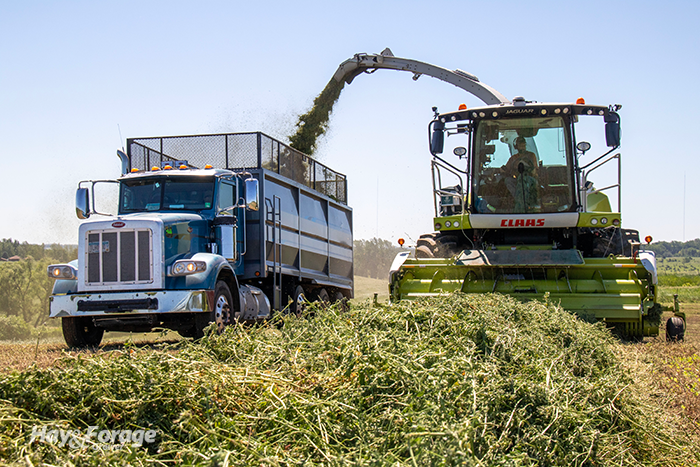
Pricing hay to accurately reflect forage quality is an ongoing challenge, especially because there are no hard and fast standards to justify a going rate. Even more challenging is pricing haylage.
Haylage is usually a homegrown forage source for dairies, being chopped and stored on-farm. It’s less common to find haylage for sale, especially considering its high moisture that leads to even higher trucking costs. But in some cases, haylage can be brought in from outside sources, and when it is, it is critical to determine a fair price. Lauren Krentz, a dairy and young stock specialist with Vita Plus, explains how to do this in a recent Forage Foundations article.
Price discovery for haylage — and baleage — depends on several factors, which can be objective and subjective. For instance, Krentz notes 1 pound of haylage or baleage should objectively be valued the same as 1 pound of dry hay on a dry matter (DM) basis. However, there may be some different viewpoints as to how various feeds physically interact in a total mixed ration (TMR), which is a subjective point to consider.
Here's an example
To find a starting price point, refer to local hay auction prices. Krentz suggests using large square bale prices as a reference for haylage, and forage test results can help you adjust prices according to account for feed value.
Consider this: Your neighbor is selling alfalfa haylage that is 40% DM with 145 relative feed value (RFV). Using the University of Wisconsin-Madison Extension’s hay market report from April 1 as an example, Krentz says this would correlate to the category of large square bales between 125 and 150 RFV at 85% DM that were priced at $101 per ton.
When given a range of RFV on a market report, Krentz recommends finding the average value to use in the following equations. In this situation, the average would be 137.5 RFV for the reference bale category. Next, find the adjustment factor for the DM differences between the haylage and the reference bales.
“If your neighbor’s haylage is 40% DM and the reference bale is 85% DM, simply divide 40 by 85 to get the adjustment factor of 0.47,” she instructs. “This means that by correcting for DM only, the neighbor’s haylage is worth 47% of the [hay] price on an as-fed basis.” Therefore, the moisture-corrected value of the haylage would be $47.47 per ton as-fed.
Although this is a good ballpark estimate, Krentz recommends getting more specific. Since the haylage quality of 145 RFV is higher than the average reference bale at 137.5 RFV, correct for this difference by dividing 145 by 137.5 to get 1.05. Then, multiply this correction factor by the moisture-corrected price to realize a quality-corrected price of $50.06 per ton of haylage on an as-fed basis.
“Other subjective factors will likely come into play, including [hauling] distance, pickup versus delivery, and shrink from storage and transportation,” Krentz writes. “You and the seller will need to discuss and decide how the considerations will impact the final price.”
To get even more specific, Krentz suggests using a commodity-based pricing structure to value key nutrients in the haylage. This requires software tools to evaluate the value of forage in the TMR. Work with your nutritionist or farm consultant to access these tools.
“The price for haylage can be weighted by the nutrient value it brings to the table as compared to commodity prices and even dry hay that could be purchased at an auction,” Krentz states. “This whole ration approach can help you determine a fair deal compared to alternative feed sources.”

